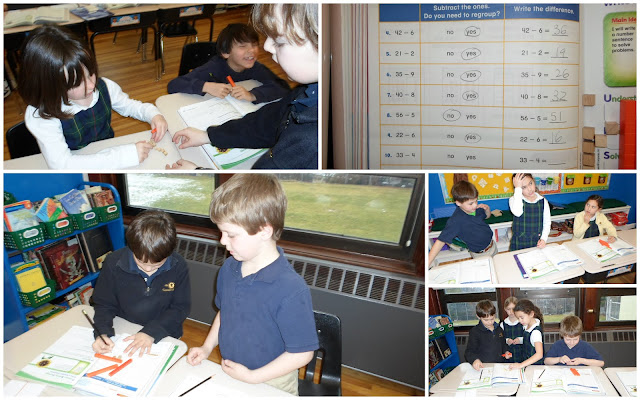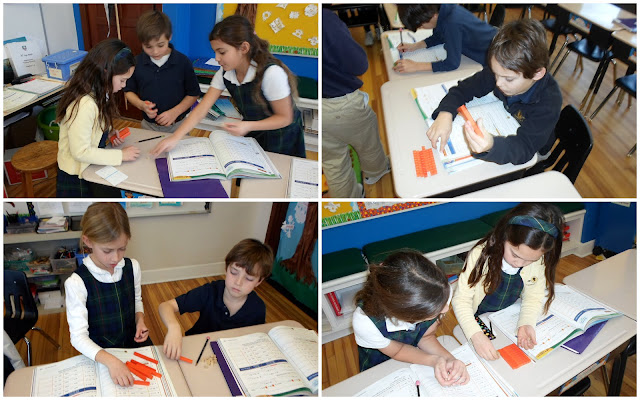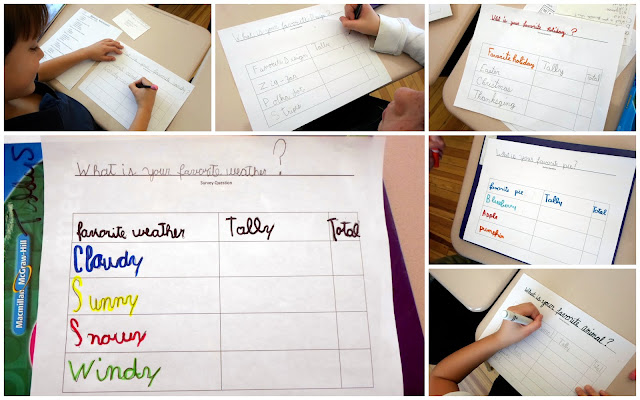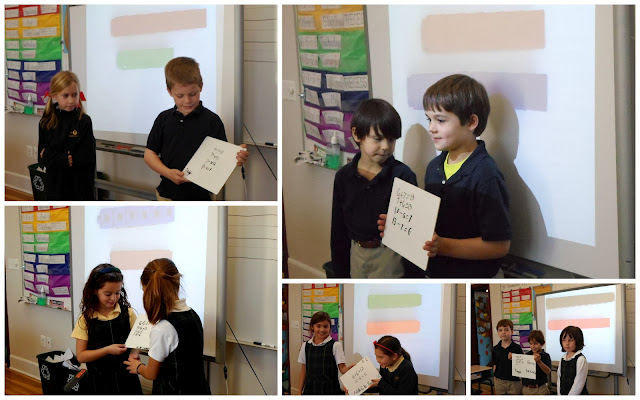Students were quick to understand the concepts of regrouping when subtracting double-digits, based on the concrete representation of the base ten blocks. We pretended that the blocks represented money - a ones block is a $1 bill and a tens block is a $10 bill. If we have two $10 bills in our wallet, and someone wants to borrow $6, we would clearly have to break a $10 into ten $1s.
Math with Mrs. Forrester
Welcome to Mrs. Forrester's Eighth Age Math at Calvert School
Friday, February 1, 2013
Five Corners
On Friday last week, Mr. Shep was out, so our class combined with his class and together students engaged in "Five Corners." At each corner of the room (and the middle), there was a station where students would collaboratively or independently complete an activity. Students really enjoyed this change of pace!
Friday, January 11, 2013
Tens and Ones
Although many of our students know how to add double-digit numbers using the standard algorithm, sometimes the conceptual understanding behind the math gets lost or forgotten. To warm up our double-digit addition skills in this unit, we went back to representing numbers using base ten blocks. In groups of three, students chose the correct pieces to respresent two addends of an addition problem. When they combined (added) their pieces together, they were able to identify whether they could regroup ten ones blocks as a single tens rod. The banker helped them make the trade, and students could then identify the final solution to the addition problem. Keeping this concrete process in mind will allow them to make greater sense of the more abstract process of regrouping ones as tens using the algorithm.
Wednesday, January 9, 2013
Adding Tens or Ones
Our enthusiasm and competitive nature were sparked with this game on the hundreds chart. In pairs, students took turns rolling a die, and decided whether to move that number of ones or tens, with the goal being to land on 99 exactly. If a student was able to land on the same number as his/her partner, the partner got booted back to square 1!
Fun with Data
As an introduction to data, surveys, and tally charts, students each created their own survey question with answer choices. Next, they set up a tally chart to gather data from their peers. As a class, we did a gallery walk in the hallway and responded to every student's survey question. Students were then able to use their data to create a pictograph on a folder paper. Learning is much more meaningful when we can personalize it!
Friday, December 7, 2012
Fact Families
Students worked in pairs and used manipulatives to relate addition to subtraction and create fact families.
Sunday, November 11, 2012
Counting On with Literature and Technology
To provide students with a meaningful real-world scenario in which one might use "counting on" as a method of adding, we read the book, 100th Day Worries by Margery Cuyler. In it, a student is asked to bring one hundred objects to class, in order to celebrate the one-hundredth day of school. She has trouble thinking of an object of which she can bring in one hundred, but her family helps her realize that she can bring smaller numbers of many different objects. She keeps adding on, until she reaches one hundred!
To provide a strong visual representation of the "counting on" strategy that our main character was using, we used the Splat Square on the SMARTboard. Students could add on with every new item she found, thus ensuring that she really did make it to one hundred!
Subscribe to:
Posts (Atom)








